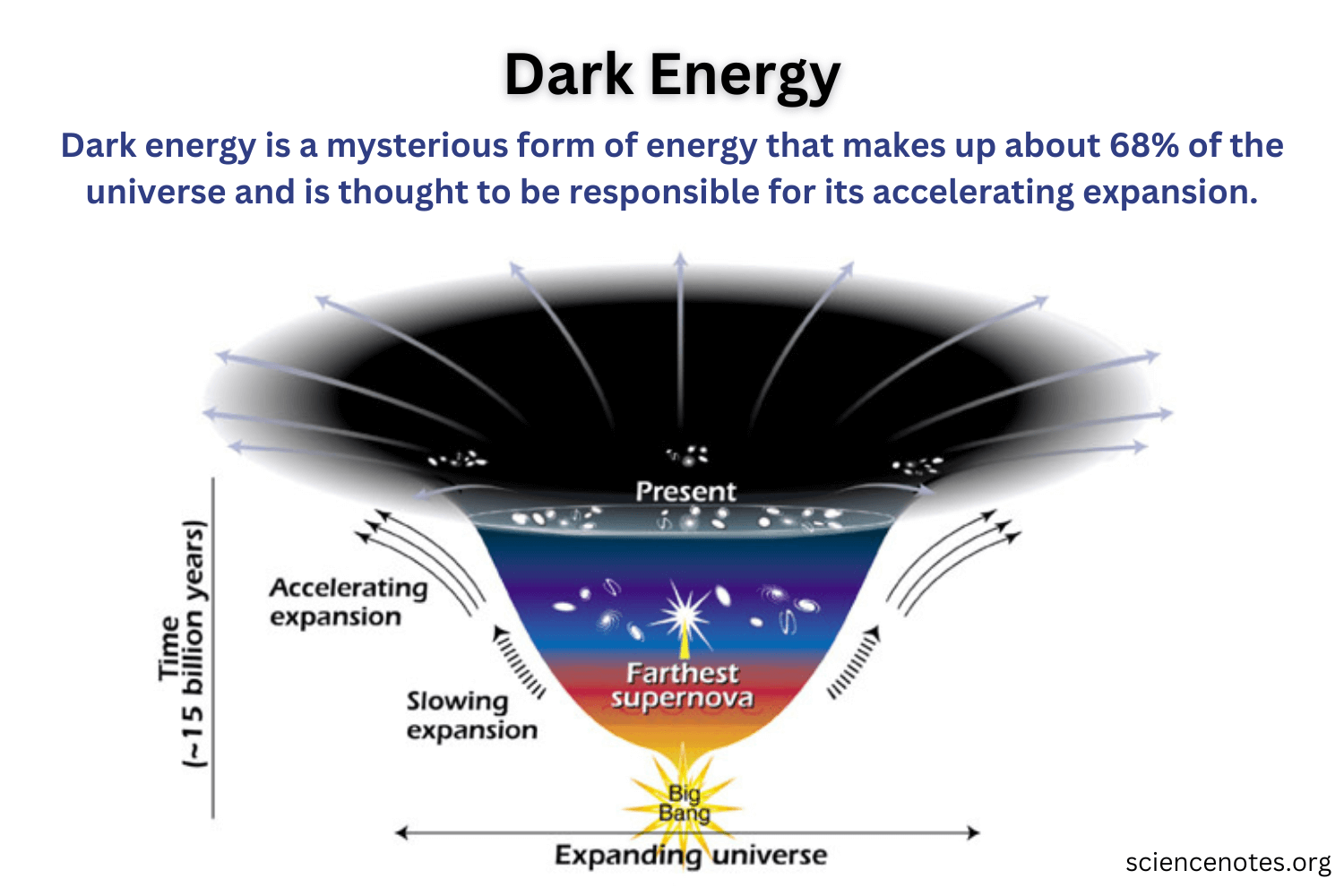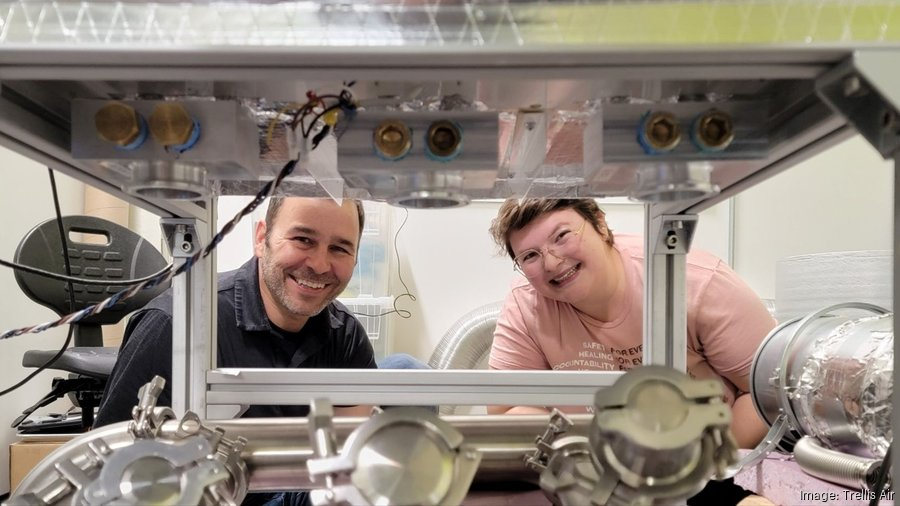Dark energy remains one of the most enigmatic components of our universe, driving its accelerating expansion while evading direct observation. Recent findings from the Dark Energy Spectroscopic Instrument (DESI) collaboration, involving experts from institutions like Harvard, suggest that dark energy, traditionally understood as a cosmological constant, may actually be evolving over time. This intriguing revelation opens up discussions about the universe’s fate and challenges long-standing paradigms in cosmology. By employing advanced techniques to analyze Baryon Acoustic Oscillations and mapping over 14 million galaxies, the DESI team sheds light on the delicate balance between matter and dark energy. As these insights unfold, they not only transform our understanding of cosmic structure but also reshape the narrative around the ultimate destiny of the universe itself.
In the realm of astrophysics, the term ‘dark energy’ is often synonymous with concepts like the cosmological constant, a foundational element thought to influence the expansion of space itself. Collaborative efforts, such as those from the Dark Energy Spectroscopic Instrument (DESI), aim to decode the effects of this mysterious force on cosmic structures and the overall fate of the cosmos. By exploring the distribution of galaxies and the enigmatic Baryon Acoustic Oscillations, researchers seek to mitigate the uncertainties surrounding the universe’s accelerating growth. These investigations provide critical insights not only into the properties of dark energy but also into the broader mechanics governing our universe’s evolution. As scientists delve deeper into these cosmic phenomena, they pave the way for a more comprehensive understanding of fundamental astrophysical principles.
Understanding Dark Energy and Its Role in the Universe
Dark energy is a mysterious force that makes up a significant portion of the universe, driving its accelerating expansion. Current theories often refer to it as a ‘cosmological constant,’ a concept introduced by Albert Einstein. However, recent findings from the Dark Energy Spectroscopic Instrument (DESI) collaboration suggest that this perception of dark energy could be shifting. As researchers delve deeper into the cosmos, they are uncovering evidence that this energy might be changing over time, potentially altering our understanding of cosmic evolution and the ultimate fate of the universe.
The observations made by DESI span over 11 billion years and analyze the distribution of matter across the universe. By closely examining Baryon Acoustic Oscillations (BAO), researchers can gauge the effect and strength of dark energy at various cosmic epochs. This intricate mapping of dark energy not only raises questions about its constancy but also suggests a dynamic universe that may evolve in ways we are just beginning to understand.
The Impact of the DESI Collaboration on Cosmology
The Dark Energy Spectroscopic Instrument (DESI) is a monumental project that brings together over 900 researchers from 70 institutions around the globe. Managed by the U.S. Department of Energy’s Berkeley Lab, DESI aims to shed light on dark energy and the expansion of the universe through comprehensive celestial observations. The collaboration’s efforts in analyzing vast amounts of data have led to groundbreaking findings about the interactions between dark energy and observable matter, indicating that the universe’s expansion may not follow the path previously predicted by existing models.
The work done by DESI, including the creation of the most extensive 3D map of the universe, plays a crucial role in refining our understanding of cosmological principles. By employing sophisticated algorithms and simulations, leading researchers, like Harvard’s Professor Daniel Eisenstein, have contributed to making sense of complex cosmic phenomena. The insights gained through DESI’s analysis could redefine our predictions for the universe’s fate, providing a better grasp of how dark energy influences cosmic structures over time.
With its first data release, DESI not only offers astronomers a treasure trove of information about millions of celestial objects, but it also opens up new avenues for astrophysical research. As researchers explore galaxy evolution and the cosmic web, the collaboration continuously enhances our understanding of the universe, empowering scientists to devise new hypotheses and theories that address lingering questions in cosmology.
Baryon Acoustic Oscillations: A Key to Unlocking Dark Energy Mysteries
Baryon Acoustic Oscillations (BAO) are regular, periodic fluctuations in the density of visible matter in the universe, serving as a crucial tool in measuring the universe’s expansion. These oscillations originated in the early universe and comprise a framework through which scientists can interpret the impacts of dark energy. By acting as a ‘standard ruler,’ BAO allows researchers to establish distances across the cosmos, ultimately leading to a better understanding of how dark energy contributes to the universe’s expansion.
The DESI collaboration leverages the BAO patterns observed throughout the cosmos to gain insights into the historical behavior of dark energy. By comparing these fluctuations against the backdrop of dark energy’s influence, researchers can draw significant conclusions about its evolution. This methodology has proven to be instrumental in the ongoing investigative efforts to understand whether dark energy remains consistent or if it is changing over time, thereby reshaping our perspective on the fabric of the universe.
The Constant Evolution of Dark Energy
Recent studies conducted by the DESI collaboration have raised compelling questions regarding the stability of dark energy. The research suggests that rather than remaining a fixed entity, dark energy might be evolving. Such findings challenge the long-standing belief of a constant cosmological force and intrigue astronomers and physicists alike. Understanding this evolution could provide vital clues about the ultimate fate of the universe, informing theories of cosmic acceleration and potential future scenarios.
As scientists continue to analyze the DESI datasets, they are working to comprehend the implications of these findings on our cosmological models. Should dark energy prove to be dynamic rather than static, the implications could be far-reaching—potentially altering the fundamental principles governing the large-scale structure of the universe. This evolving narrative around dark energy invites deeper investigations into the complex interplay between matter and energy that shapes cosmic evolution.
The Future of Cosmological Research Post-DESI Findings
The findings from the Dark Energy Spectroscopic Instrument (DESI) project open a new chapter in cosmological research, prompting further inquiry into both dark energy and the structure of the universe. With the publication of DESI’s initial dataset, researchers are equipped with a wealth of information that will fuel multiple studies. This data is expected to inspire a series of investigations aimed at validating the evolving nature of dark energy, its causative factors, and its repercussions on cosmic expansion.
Future research may include interdisciplinary approaches that incorporate insights from other scientific fields, such as particle physics and theoretical astrophysics, to build a more cohesive model of the universe. As the DESI collaboration continues its mission to map the cosmos, scientists anticipate that these findings will catalyze significant advancements in both our theoretical frameworks and empirical understandings of dark energy, potentially unlocking the mysteries surrounding the universe’s fate.
The Role of the Center for Astrophysics in Advancing Cosmology
The Center for Astrophysics | Harvard & Smithsonian (CfA) is at the forefront of the DESI collaboration, playing vital roles that extend beyond mere participation. With expert researchers like Daniel Eisenstein leading the charge in data analysis and cosmological interpretations, the CfA’s contributions have been instrumental in navigating complex challenges presented by the investigations of dark energy.
The center’s commitment to education and public outreach, exemplified by scientists like Claire Lamman, showcases the importance of making complex astronomical concepts accessible to the public. By effectively communicating their findings and collaborating with other institutions, the CfA continues to expand the knowledge base surrounding dark energy, Baryon Acoustic Oscillations, and the future dynamics of the universe.
Exploring Cosmic Structures Through DESI
The DESI collaboration is more than a dark energy analysis initiative; it is a comprehensive project aiming to explore cosmic structures and galaxy formation. By mapping millions of galaxies and quasars, DESI provides insights into the intricacies of the cosmic web and how these structures have evolved under the influence of dark energy. This endeavor enhances not only our understanding of the universe’s structure but also the critical role that dark energy plays in shaping the modern cosmos.
The survey’s ongoing observations allow researchers to witness the dynamic processes that occur across diverse cosmic epochs. This continuous mapping enhances the data collected over time, creating a more comprehensive picture of the associated astrophysical phenomena. As researchers investigate these cosmic frameworks, they are better suited to elaborate on the foundational principles that govern galaxy formation, distribution, and interaction in conjunction with dark energy.
The Methodology Behind Dark Energy Spectroscopic Instrument
The DESI collaboration employs cutting-edge technology and data collection methods to analyze the cosmos in unprecedented detail. By utilizing highly sophisticated spectroscopic techniques, researchers can collect extensive data on millions of celestial objects, allowing them to observe how dark energy is interacting with matter across vast distances. This meticulous approach lays the groundwork for accurately measuring Baryon Acoustic Oscillations and regional variations in dark energy over billions of years.
The methodology not only facilitates a deeper understanding of dark energy but also provides critical insights into the universe’s evolution. The rigorous data collection and analytical methods utilized in DESI enable scientists to derive meaningful interpretations about the dynamic nature of dark energy, ultimately leading to a more robust cosmological model that reflects the complexities of our universe.
Public Engagement and the Importance of Data Accessibility
The findings from the DESI project underscore the importance of public engagement and data accessibility in advancing scientific knowledge. With the recent release of Data Release 1, astronomers and researchers can now access detailed information on celestial objects, fostering a collaborative environment where burgeoning scientists can thrive. This open-access approach not only democratizes knowledge but also encourages cross-disciplinary exploration in cosmology and astrophysics.
Through workshops, presentations, and educational materials, members of the DESI collaboration are committed to sharing their insights with the broader community. This initiative helps demystify the complexities of dark energy and cosmic structure, fostering a public understanding of how dark energy analysis can impact our perception of the universe. By bridging the gap between research and public knowledge, scientists can inspire future generations to explore the mysteries of the cosmos.
Frequently Asked Questions
What is dark energy, and how does it relate to the cosmological constant?
Dark energy is a mysterious force that is driving the accelerated expansion of the universe. It is often associated with the ‘cosmological constant,’ a concept introduced by Albert Einstein. This constant represents a uniform energy density filling space homogeneously, suggesting that dark energy may have a constant effect across the universe as it expands.
How does the Dark Energy Spectroscopic Instrument (DESI) analyze dark energy?
The Dark Energy Spectroscopic Instrument (DESI) analyzes dark energy by creating the largest 3D map of the universe in order to study the distribution of galaxies and matter. By examining patterns known as Baryon Acoustic Oscillations, DESI can measure changes in the universe’s expansion rate and thus assess the impact of dark energy over the past 11 billion years.
What implications does the latest dark energy analysis from DESI have for the universe’s fate?
The latest dark energy analysis from the DESI collaboration suggests that dark energy might be weakening over time, which could challenge existing models of the universe. This finding has significant implications for the universe’s fate, as it indicates that the interactions between dark energy and matter may evolve, potentially altering the long-term trajectory of cosmic expansion.
What role do Baryon Acoustic Oscillations play in dark energy research?
Baryon Acoustic Oscillations are critical in dark energy research as they provide a standard ruler for measuring the expansion of the universe. By analyzing the distinct patterns left by these oscillations, scientists can determine how the expansion rate of the universe changes over time, thereby gaining insight into the behavior of dark energy.
Who are the key contributors to the DESI collaboration’s dark energy findings?
Key contributors to the DESI collaboration include Harvard researchers, such as Professor Daniel Eisenstein, who co-developed algorithms and simulations for dark energy analysis. Cristhian Garcia Quintero focuses on the cosmological interpretations of the results, while Michael Rashkovetskyi provides critical distance calculations. Claire Lamman aids in public outreach and communication regarding DESI’s dark energy discoveries.
What does the DESI Data Release 1 include, and how can the public use it?
DESI Data Release 1 includes extensive data on millions of celestial objects, which is now available for public exploration. This dataset enables researchers and the public to perform detailed astrophysical research, contributing to a deeper understanding of dark energy and the structure of the universe.
| Key Point | Details |
|---|---|
| Role of DESI | The Dark Energy Spectroscopic Instrument (DESI) is crucial for analyzing dark energy and its effects on the universe. |
| Findings on Dark Energy | Results suggest that dark energy may be weakening over time, affecting the universe’s expansion model. |
| Data Utilization | The analysis is based on a 3D map of the universe over 11 billion years, using data from over 14 million galaxies and quasars. |
| Baryon Acoustic Oscillations | Patterns from the early universe provide a standard ruler to measure changes in dark energy. |
| Collaboration and Impact | Over 900 researchers from 70+ institutions are involved, enhancing our understanding of dark energy and cosmic evolution. |
| Public Data Release | The first data release (Data Release 1) is now available for public exploration, supporting wider astrophysical research. |
| Future Research | Ongoing DESI survey seeks to expand the cosmic map and improve our knowledge of the universe’s physics. |
Summary
Dark energy remains a mysterious and critical component of the universe, influencing its expansion. Recent findings from the Dark Energy Spectroscopic Instrument (DESI) indicate that dark energy’s strength may be changing over time, necessitating a reevaluation of our cosmic models. As scientists delve deeper into data involving over 14 million celestial objects, they continue to uncover the complexities of dark energy and its role in shaping the cosmos. The ongoing research not only sheds light on dark energy but also provides insight into the evolution of galaxies and the fundamental structure of the universe.



